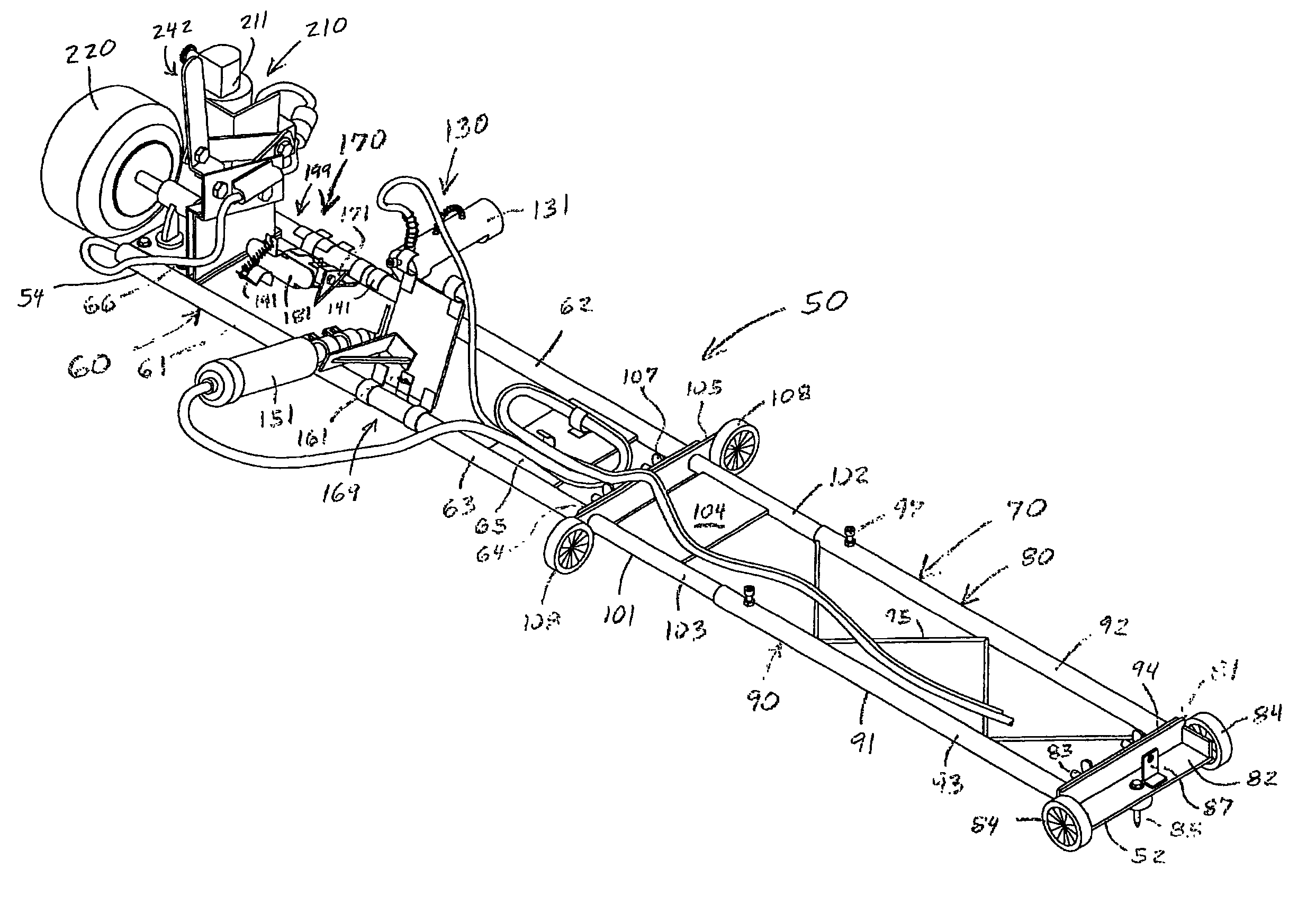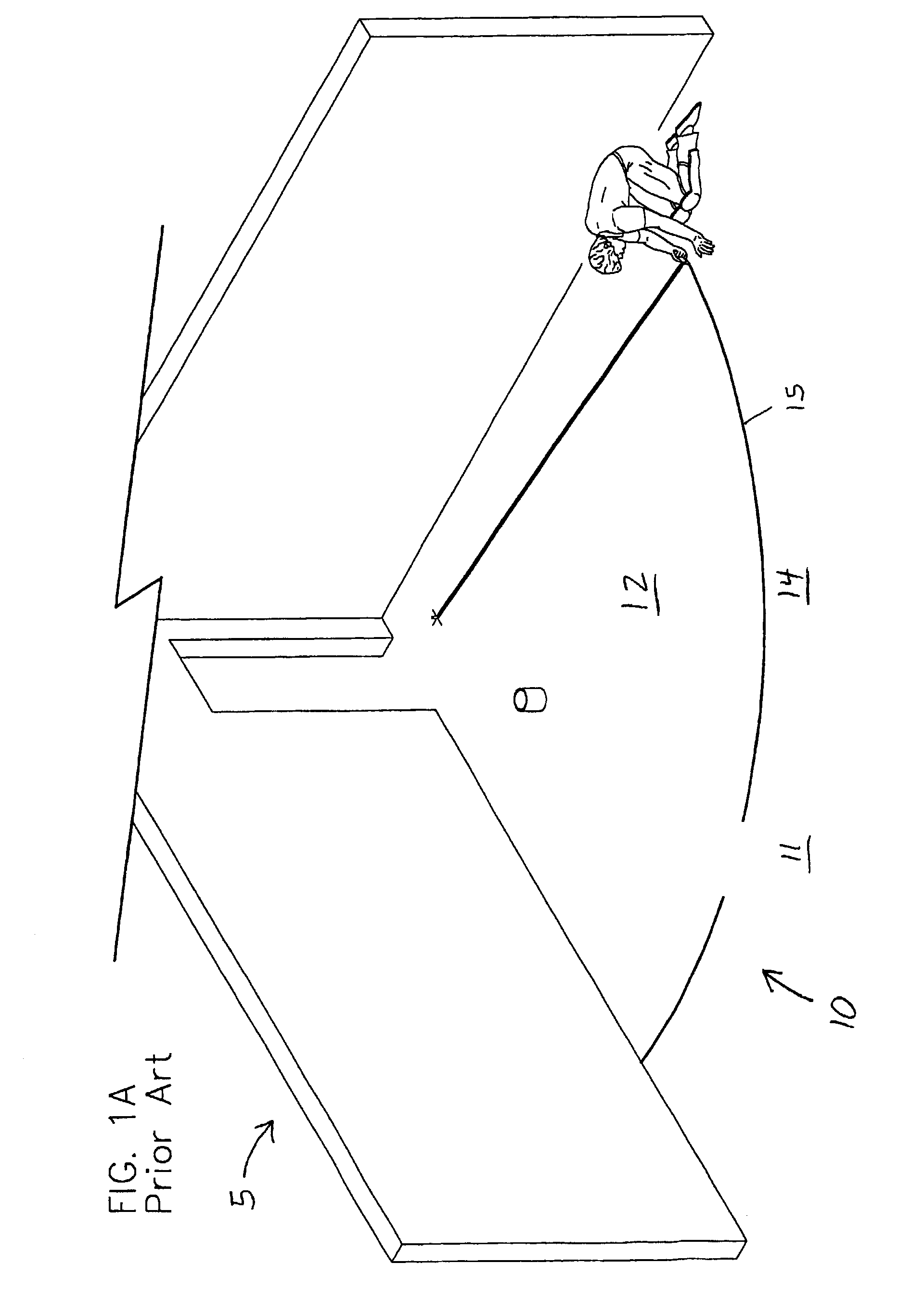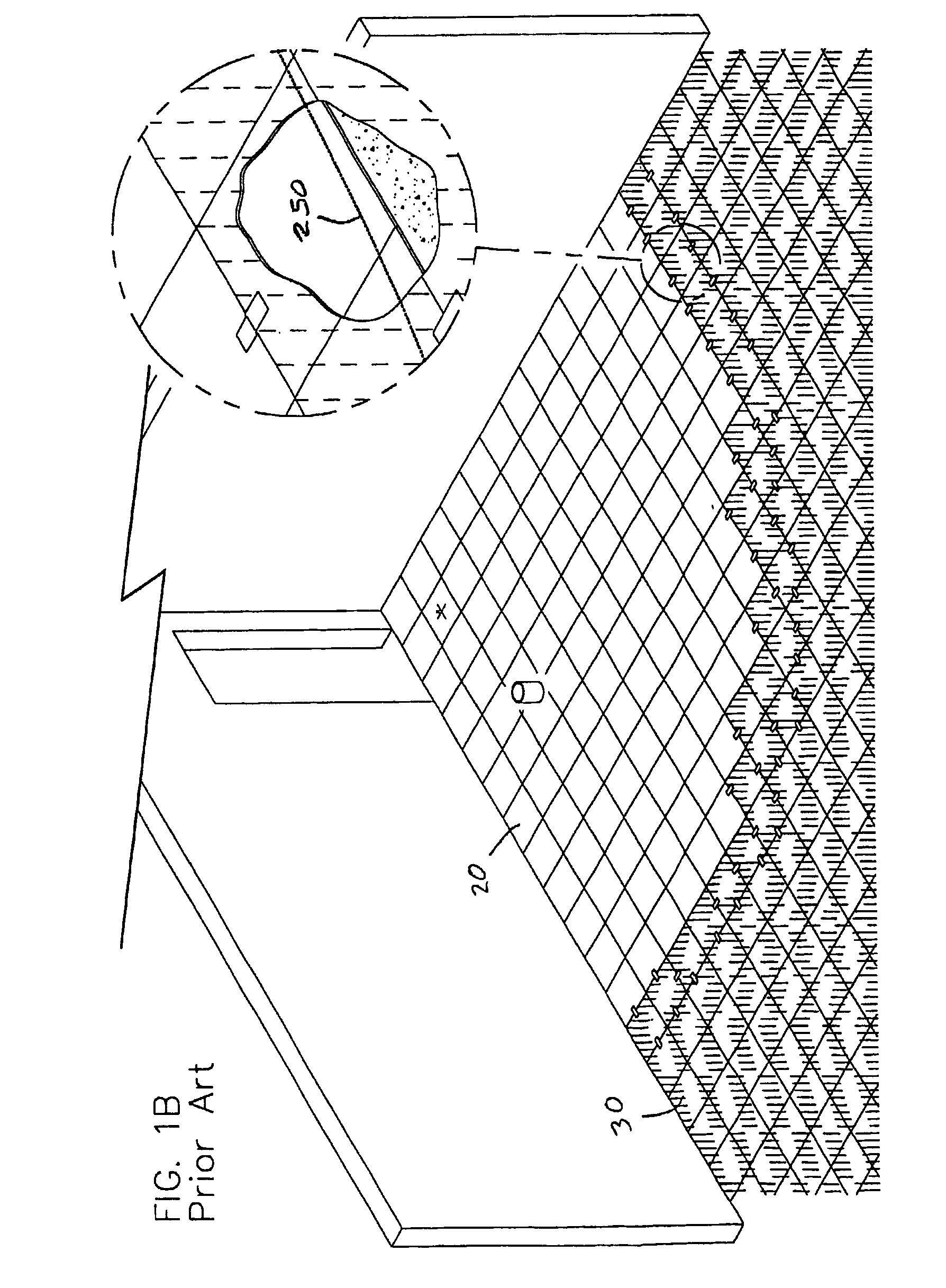Apparatus for lap seaming floor coverings
a technology of lap seaming and floor covering, which is applied in the direction of sawing apparatus, metal working apparatus, constructions, etc., can solve the problems of creating non-uniform seams between tiles, inconvenient use of tools to make arcuate cuts in tiles, and conventional tools are not typically intended to make long continuous and uniform seams
- Summary
- Abstract
- Description
- Claims
- Application Information
AI Technical Summary
Benefits of technology
Problems solved by technology
Method used
Image
Examples
second embodiment
[0065]The marking and lap seaming apparatus 50 has a working section 60 with a frame 61 that supports and connects its various working components discussed below. The frame 61 is robustly designed to support the weight of these various components and is preferably made of metal. The frame 61 includes two parallel, spaced apart tubes 62 and 63 that are rigidly joined by a perpendicular cross plate 64 and two mounting brackets 65 and 66. The tubes 62 and 63 are preferably spaced about six inches apart. The support tubes 62 and 63 and mounting brackets 65 and 66 are aligned substantially parallel to and about an inch above the surface 12 of the floor 10. The forward tube 62 is preferably marked with indicia (not shown) for positioning the working components as discussed below. In the embodiment of the apparatus 50 shown in FIG. 2, the frame 61 and its support tubes 62 and 63 are about three feet long. In the apparatus 50 shown in FIG. 5, the frame 61 and its support tubes 62 and 63 are...
first embodiment
[0067]the alignment mechanism 70 is shown in FIGS. 2 and 3. In this embodiment, the alignment mechanism 70 takes the form of a rotatably anchored, telescoping assembly 80 that includes anchor and telescoping assemblies 81 and 90. The anchor assembly 81 has an L-shaped mounting plate 82 with a pair of spaced coupling bolts and wing nuts 83 for rigidly connecting the anchor assembly 81 to the telescoping section 90. A pair of wheels 84 are mounted to the sides of the mounting plate 82. A vertically oriented pivot pin or anchoring screw 85 is located at the middle of the plate 82. The axles of the wheels 84 are linearly aligned with each other and the axis of the pivot pin 85. The pivot pin 85 is aligned with and anchored or otherwise rigidly secured to the floor 10 at reference point 55. The pivot pin 85 is pivotally or rotatably connected to the middle of the mounting plate 82 to allow the anchor assembly 81 to pivot or rotate about the reference point 55 and pivot pin. An alignment ...
PUM
| Property | Measurement | Unit |
|---|---|---|
| temperature | aaaaa | aaaaa |
| temperature | aaaaa | aaaaa |
| weight | aaaaa | aaaaa |
Abstract
Description
Claims
Application Information
 Login to View More
Login to View More - R&D
- Intellectual Property
- Life Sciences
- Materials
- Tech Scout
- Unparalleled Data Quality
- Higher Quality Content
- 60% Fewer Hallucinations
Browse by: Latest US Patents, China's latest patents, Technical Efficacy Thesaurus, Application Domain, Technology Topic, Popular Technical Reports.
© 2025 PatSnap. All rights reserved.Legal|Privacy policy|Modern Slavery Act Transparency Statement|Sitemap|About US| Contact US: help@patsnap.com



